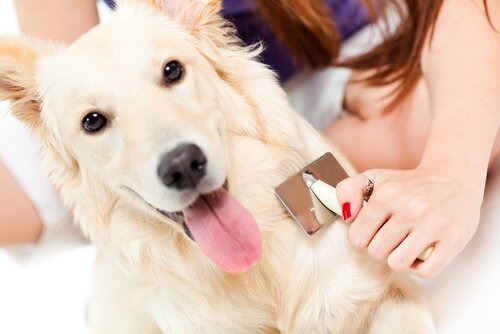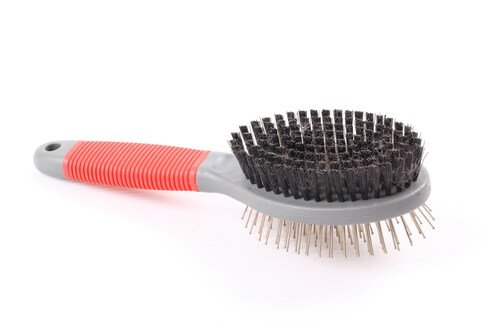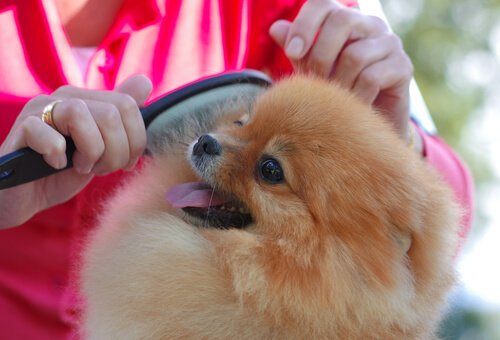What To Do If My Dog Doesn't Like Being Groomed?

There is no doubt about how much your dog loves you, but as soon as they see you with a brush… they run away! No matter whether you’ve just given them a bath, or if you’re simply doing their daily grooming, they always run away. If your dog doesn’t like being groomed, here are some tips to change this.
My dog doesn’t like being groomed. What do I do?
Brushing is an essential part of your dog’s hygiene. It removes dead hairs, keeps their coat clean, shiny and looking better in general. It also helps remove dead skin cells or dandruff.
Therefore this is why you need to be committed when it comes to grooming your dog. So you may be wondering about how to do it. So in this article, you can find some good advice on brushing your dog.
Get them used to the brush
If your dog seems to be afraid of the brush each time it appears, you can help them “become friends”. Get him used to the sight of the brush. Put it on the floor and put treats or doggy biscuits around it. Let your dog get close, smell it, and eat the biscuits.
It might be that once there’s nothing left to eat, your dog might start playing with the brush. So it’s best not to force him and let them decide if they want to get close to the brush. Don’t pick it up because the needs to be another one of those fun objects for your dog. Soon, they will get used to its presence and realize that there’s nothing to be afraid of.

Examine your brushes
Have a look at which brushes you’re using. Maybe they’re not the right ones for your dog. However, a dog brush won’t be good enough for all dogs. It’ll depend on the dog’s size, type of hair, and hair length.
In order to pick out the right brush, speak with your vet. They will be able to give you accurate advice on using them. The wrong brush could injure your dog, which may be the reason why they always run away.
Choose the right moment
If you’re now sure that you’ve got the right brush, don’t room your dog right away. You can hide the brush close to where you normally sit. Your dog surely won’t take long to approach you.
Then, bring your dog towards you, stroke them, and when they’re calm, without looking at them, begin brushing gently. You can begin first with your hands and then with the brush, or even alternate so your dog feels comfortable.
Be careful with the way you groom them
It might be that your dog doesn’t like being groomed because of the way you do it. Sometimes, people can do it too slowly because they’re afraid of hurting their dog. Other times, they can do it too quickly.

Depending on your dog’s hair, you may need to brush them differently. Some pets have hair that gets easily tangled and can’t be brushed in the same way.
Get rid of knots
If your dog gets a lot of knots in their hair, they can suffer a lot when you try to groom him. It’s better for you to look for the knots first and try to untangle them. This will provide your dog with a more positive grooming experience.
If their hair is too tangled up, you can always resort to using scissors. However, if the knots are too big because you haven’t groomed your dog for a long time, it’s possible that you’ll need to cut their hair.
Use softeners
Whether you groom your dog every day or just after a bath, there are products in animal shops that can help untangle your dog’s hair. If you use these products, the brush will glide much easier through your dog’s hair and will be less painful for them.
Dealing with a dog’s hygiene can be tedious. However, with a little patience and following this advice, you can do it effectively. So, if you do so, never again will you be able to say, “my dog doesn’t like being groomed.”